*Author: Chris Zheng
Last weekend on March 28th, I finally borrowed a Polestar 2 and test drove it for a week.
This car is very interesting. On July 22nd and 29th, 2020, Polestar respectively started the first delivery of Polestar 2 in China and Europe.
After 5 months until the end of 2020, the cumulative sales in China were less than 1,000 units, but in Europe, it was close to 10,000 units, surpassing various fuel vehicles and topped the list of mid-level luxury sporty cars in Europe.
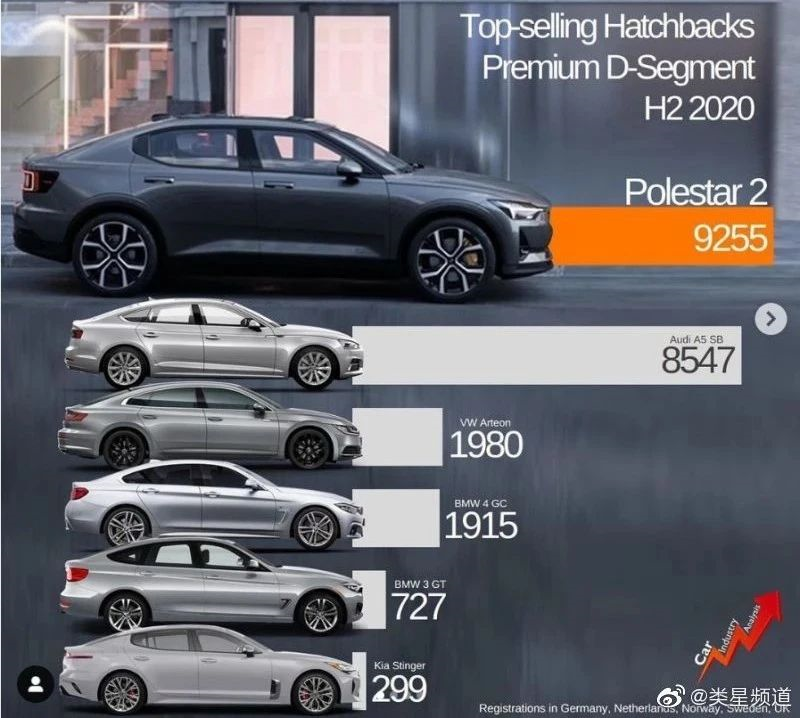
It’s obviously the same car, so there must be a problem, right?
When Designers Lead Products
This is the part I was most curious about when I borrowed the Polestar 2: What would a product led by a designer be like?
Steve Jobs was a CEO who cared a lot about products, and Elon Musk was a CEO who cared a lot about engineering. The products they ultimately created were hugely successful. My question is, what kind of product would be created if a designer became a CEO?
On June 21, 2017, the Volvo board of directors helped me realize this idea. Former Volvo Senior Vice President of Design Thomas Ingenlath was appointed Chief Design Officer (CDO) and Polestar Global CEO. At the same time, Robin Page was appointed as Senior Vice President of Design at Volvo.
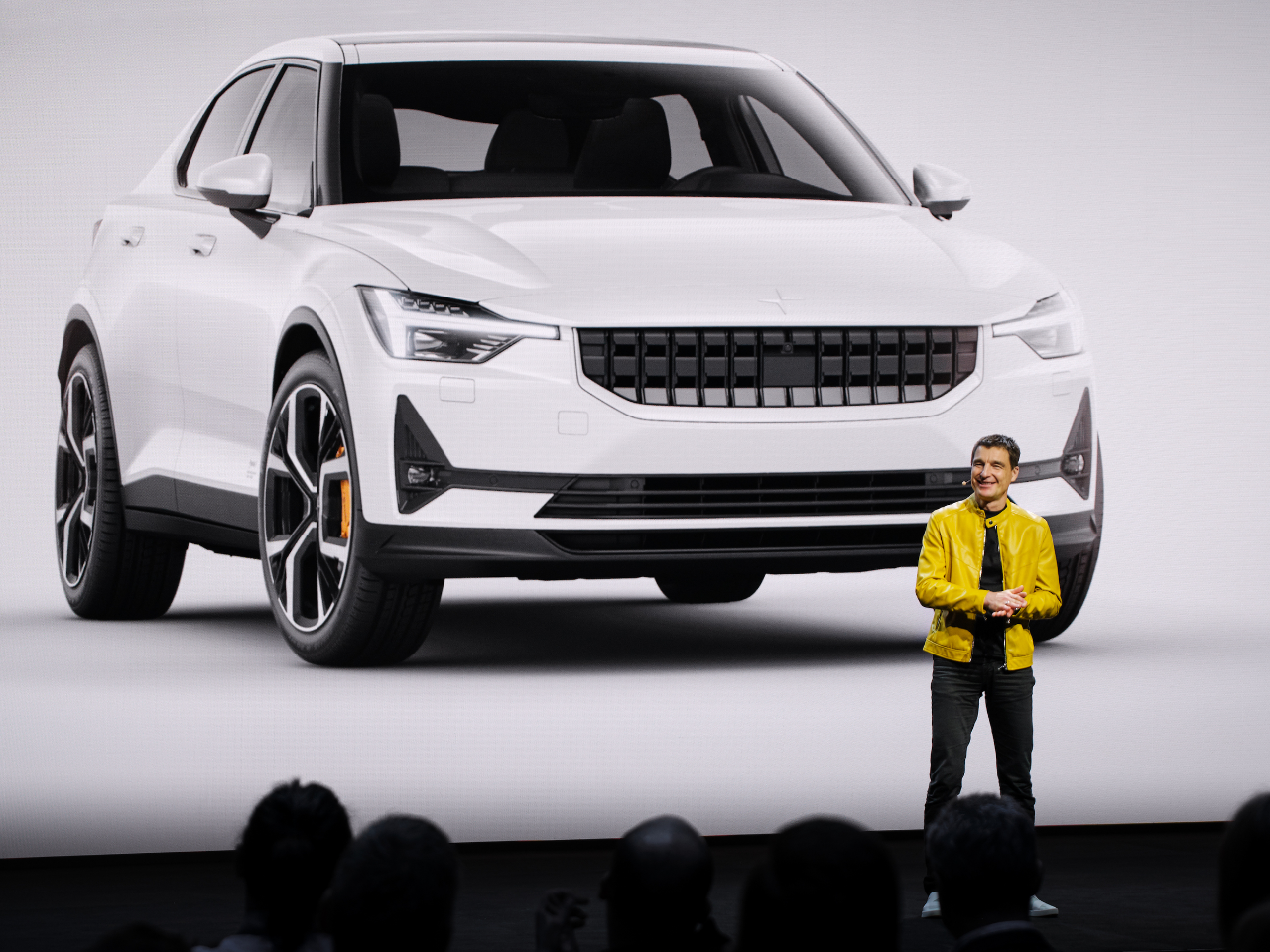
So you can actually see that for Thomas, who has been designing cars for 17 years, the role of Volvo CDO is just a title, and the Polestar CEO is the real deal. He finally had the opportunity to fully control a brand’s product and push the priority of design to the limit.
After such a long setup, let’s see the details.
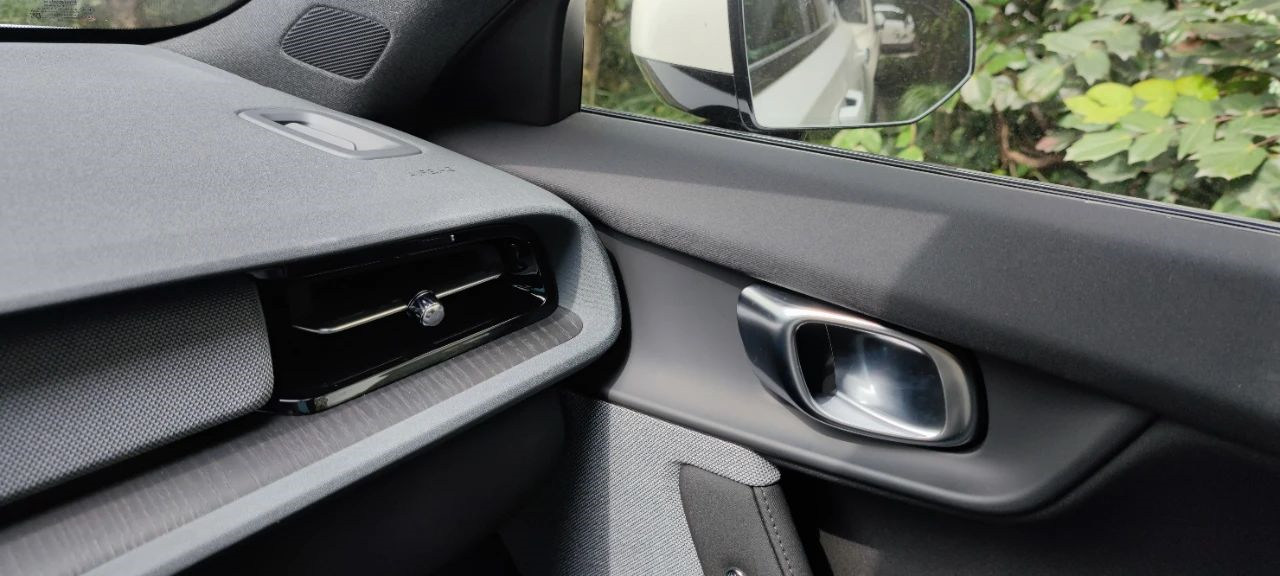
This is one corner of the Polestar 2 interior, and I never thought Thomas would take this risk – Polestar 2 uses three different fabrics in its interior. We usually think that leather and Alcantara convey a sense of luxury, but fabric?Actually, from this photo, you can see that the combination of these three fabrics is visually exquisite and sophisticated. However, I still recommend that you sit in the car in the store and try it out. This interpretation through materials, colors, and surface treatments is different from the styles of Tesla, NIO, and German luxury car brands, but it is difficult to accurately convey in written language.
My instinctive reaction was to look up the names of these three fabrics on the official website. There was no mention of them on the Chinese website, only “advanced eco-friendly materials”, and the European website only had the phrase “progressive textiles”.
It is very unique, but when it comes to promotion, it is not even mentioned. This behavior is truly something only designers can do.
In addition to this, the Polestar 2 has many high-end designs similar to the Polestar 1, such as this frameless rearview mirror and the beautiful logo light on the sunroof.
These are all typical parts that are not standardized and require Polestar to spend money on customized production, but they are designs that do not bring any actual practical benefits except for looking good.
Thomas has completely unveiled Polestar’s value proposition on this car: Polestar is truly not trying to please everyone.
I looked back at Polestar’s previous developments, and the first thing Thomas did when he took over Polestar was to invite the famous Swedish architectural design company Bornstein & Lyckefors to redesign the headquarters building of Polestar inside and out. The new headquarters looks like this.
Even today, the Polestar headquarters is still displayed on the Bornstein & Lyckefors website as a demonstration case. You can take a look if you have time, and every case is very pleasing to the eye.
So what does all these things have to do with buying and using a car? You can understand that there is not much direct connection, but I think Thomas’s internal logic is: those who care about design will definitely care about these things, and the Polestar 2 is made for them.
Let’s talk about the driving experience. In terms of mechanical qualities, we typically look at steering feel, acceleration and brake response, and chassis performance.First of all, it should be noted that the Polestar 2 has a very important high-performance optional package that includes Öhlins dual-flow valve shock absorbers that can be manually adjusted for chassis softness and hardness.

However, I haven’t tried this in the past few days because I can also understand that car lovers will occasionally come to adjust the shock absorbers to experience the pleasure of “manual modification”.
But for the vast majority of car owners, the actual scenario is more likely to be manually adjusted to the best and then no further changes.
Let’s talk about the accelerator and brake feel first. The power train of the Polestar 2 is a front and rear dual-motor assembly with a total output of 300 kW and 660 Nm, which is a basic configuration of pure electric performance cars. In terms of acceleration curve design, this car has done something interesting.
When commuting in the city, lightly step on the accelerator and release it, and you really won’t feel that it is a car with over 400 horsepower. It will not give you the feeling of pure electric vehicle’s strong torque release. I once had the illusion that this car’s performance is not strong enough until you press on the accelerator pedal, and the back of the seat will clearly remind you: “This is a high-performance car with an acceleration of less than 5 seconds per 100 kilometers.”
The main background of braking is that the unladen weight of the Polestar 2 exceeds 2 tons, and the horsepower is not small. If the braking is not good, it is actually a big problem. But in fact, the Brembo calipers on the front wheels can completely give the driver confidence, which meets my expectations for good brakes: “The force must not be too urgent, nor can it be too slow.”
The chassis of the Polestar 2 exceeds my expectations. The road maintenance in the suburbs of Shanghai is not good, and when passing through some small ditches and bumps, the Polestar 2 can accurately transmit the differences in the road surface to the driver, but it is not too hard to produce unnecessary bouncing. Of course, since I didn’t adjust the shock absorbers, you still need to go to the store to try the space of this chassis by yourself.
Finally, I will insert an off-topic: some basic active safety functions of the Polestar 2’s assisted driving system are very intelligent. The so-called “intelligent” means that you can feel some functions, such as automatic braking of the reverse warning, and the Polestar 2 is more sensitive than other cars. However, when it is triggered to warn or even brake, the corresponding scene is really where there is a car passing by.
In other words, the problem of being very sensitive but not prone to false alarms or wrong reports may be that I have not been driving for enough time?
OTA Upgrade
On March 23rd, Polestar pushed an OTA update. (In fact, I borrowed the car to experience the new version update, so it can be said that this article has digressed for a long time :))
First, let’s talk about the Polestar’s cockpit OS. The picture below shows the live event of Google I/O 2019, and the uncle on the left is Polestar CEO Thomas mentioned at the beginning of the article.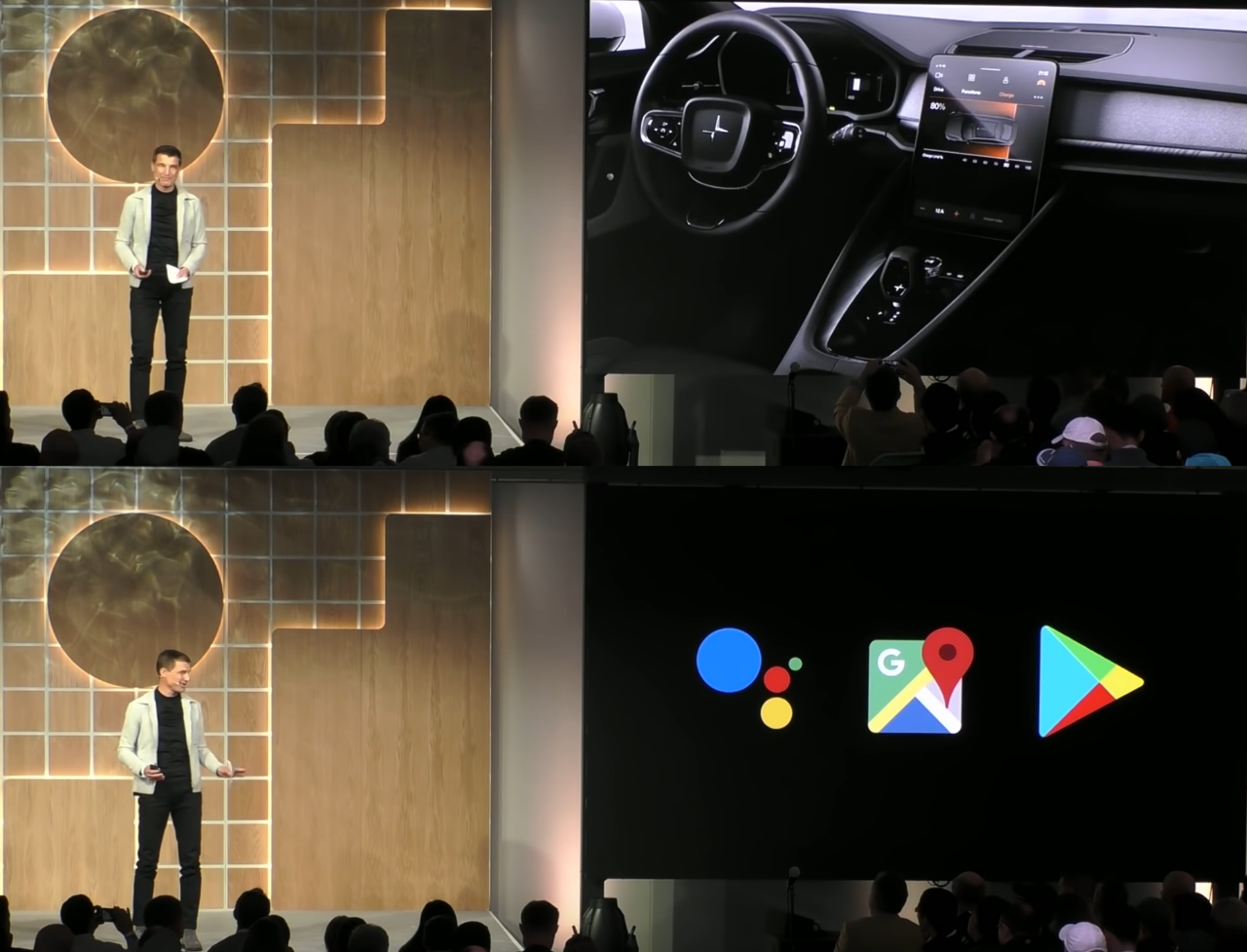
Wait, Google Developer Conference? Polestar CEO? That’s right, Polestar 2 is the world’s first car model equipped with Google’s native Android Automotive OS.
If compared to smartphones, Polestar 2 is equivalent to Google’s Pixel series, which allows Polestar to receive Google’s support for new features, bug fixes, and security updates at the first time. Polestar is also equipped with Google’s full family bucket overseas, including maps, voice assistants, and application ecology.
In China, Polestar did not establish a local UI team like Chinese smartphone manufacturers to modify Android into its own version of Android. The overall system interaction logic and UI design are relatively intact. However, this brings up a problem: whether it is Google Maps or voice assistants, or Spotify overseas, they are all in an underdeveloped state in China in the short term.
Therefore, the Chinese team needs to achieve breakthroughs on these demands by single-point solutions on maps, voice, and content. Before this, Polestar had already integrated with Amap, Huawei Hi-Car, Tmall Genie, iFLYTEK’s voice assistant, and Kugou Music, but audio content resource solutions were still not good enough.
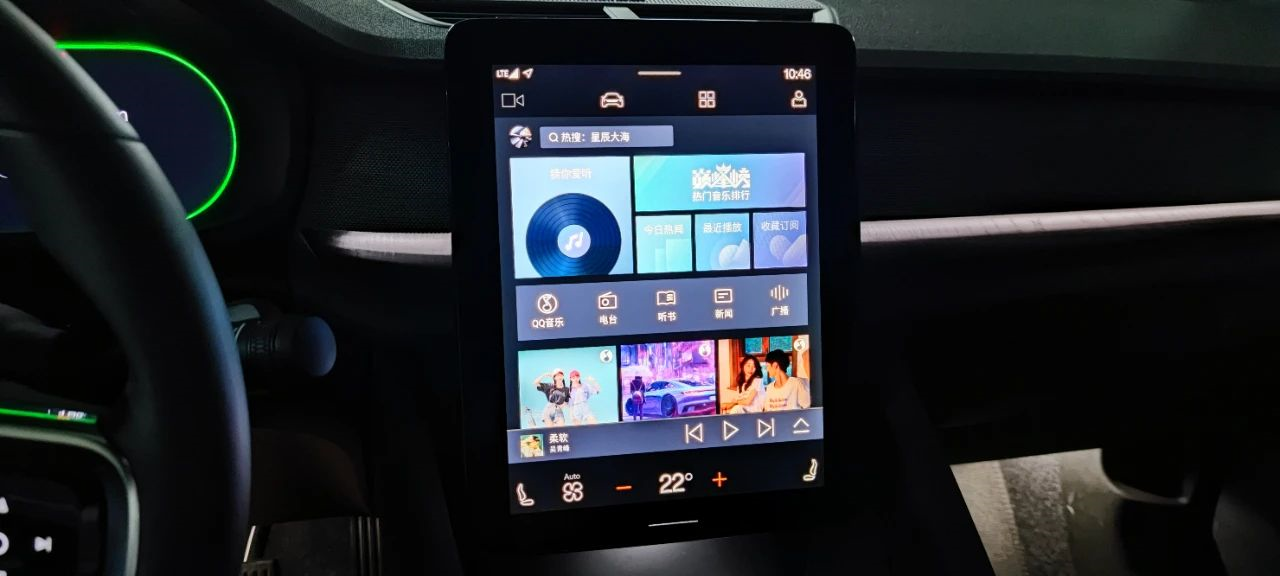
This time, the Tencent AI-Quting OTA seems like something that has never been heard of, but in reality, it is a package that includes QQ Music, Himalaya, Wechat Read, News, and Radio altogether. This is a one-stop solution for Polestar 2’s audio content resources.
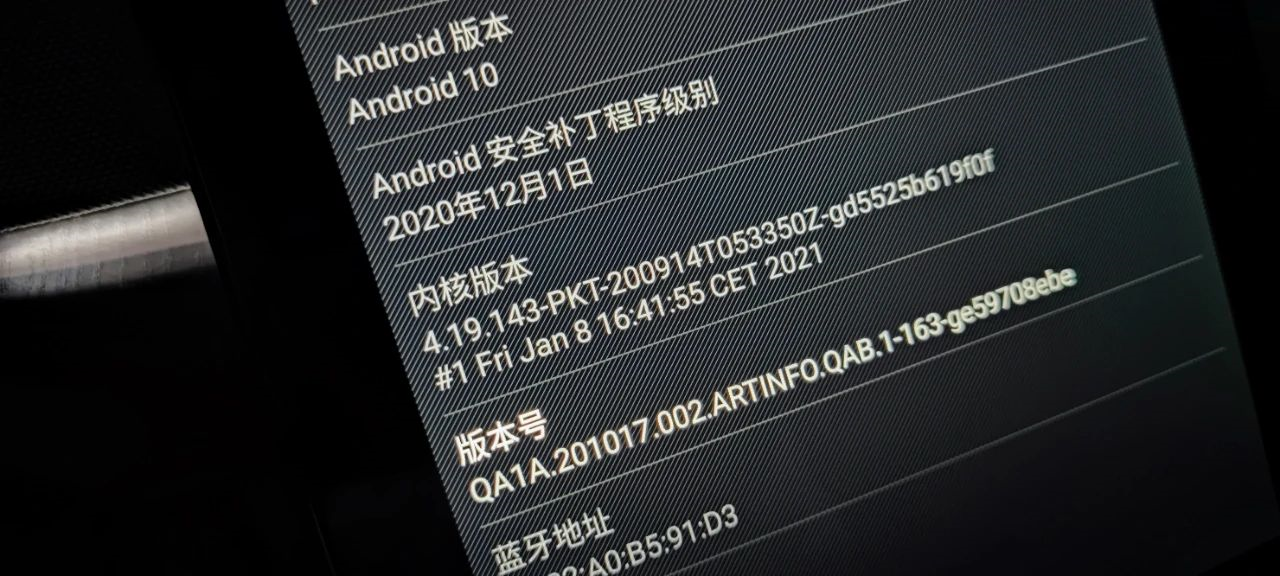
Of course, the more Polestar-styled update should be a functionality point that Google officially maintains: the system version updates from the Android P car version to the Android Q car version. Polestar 2 should be the world’s first car model.
Finally, let’s summarize. From design, mechanical quality, intelligence, and even assisted driving, Polestar 2 is a car model with distinct features. Of course, “design” part is the most differentiated.
If you care about design, why not give it a try?
This article is a translation by ChatGPT of a Chinese report from 42HOW. If you have any questions about it, please email bd@42how.com.